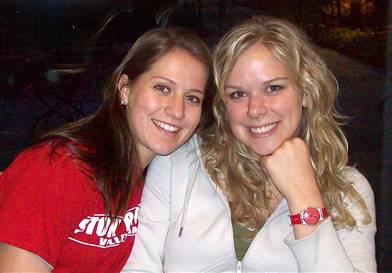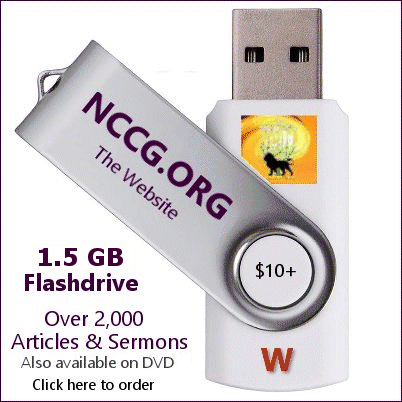RESOURCES
5-144000
A
B
C
D
E
F
G
H
I
J
K
L
M
N
O
P
Q
R
S
T
U
V
W
Y
Z
|
|

|
‘Red Watch’ friends don't let pals drink and die
Posted by Lev/Christopher on October 24, 2009 at 6:01am
in Drugs, Alcohol, Tobacco, Tattooing, Body Piercing & Sexual Issues
Program trains college students to respond to alcohol intoxication

Alicia Nelson, right, a junior at Stony Brook University in New
York, has been trained to identify and respond to signs of alcohol
poisoning by the Red Watch Band program. Fellow student Jeanette Gibbs,
left, will receive her training later this semester.
Health advocates are hoping that a cheap red watch worn by college
students like Alicia Nelson will become the new fashion trend on campus
this fall.
The watches are part of the latest effort to counter the toll of binge
drinking, a deeply entrenched problem at many colleges nationwide that
appears to be getting worse.
While studies report that more than 80 percent of college students
drink alcohol, the latest statistics reveal that nearly half indulge in
binge-drinking, generally defined as downing five or more drinks in
about two hours for men and four or more drinks for women.
The number of students who binge drink rose from nearly 42 percent in
1999, to nearly 45 percent in 2005, according to a July report by the
National Institute on Alcohol Abuse and Alcoholism. Alcohol-related
deaths among college students increased from 1,440 in 1998 to 1,825 in
2005, the NIAAA reported.
Overall, efforts to intervene in binge drinking have been largely
unsuccessful. But the main goal of programs such as the new “Red Watch
Band” program at Stony Brook University in New York is to prevent
students from dying of intoxication.
Bluntly put, Red Watch Band “is a death prevention program,” says Lara
Hunter, the program’s national coordinator. “It’s targeted at the
bystander,” she says.
The watches, which students receive after completing a training program
on how to recognize and respond to alcohol emergencies, are meant to
symbolize a band of students watching over each other when every minute
counts.
Deadly drinking games
Dr. Suzanne Fields wishes that one of her son’s friends had been
watching out for him on that night in June 2008 when he lost
consciousness and died after binge drinking at Northwestern University
in Chicago.
If someone had called 911, freshman Matthew Sunshine might have
survived after playing a drinking game. Instead, Sunshine was
humiliated and written on after he passed out.
“Acute intoxication is not a laughing matter,” says Fields. “It’s a medical emergency.”
Some kids turned her son’s head in case he threw up, but it wasn’t
enough. “They were worried about aspiration,” Fields says. “They
weren’t worried about death.”
Fields is a professor of medicine at Stony Brook and the driving force
behind the Red Watch Band program. “I realized at the time of my son’s
funeral, in talking with other students, they really think they’re
invincible,” she says. “No one realized you could die of acute alcohol
toxicity.”
Alcohol poisoning generally occurs when the blood alcohol level
surpasses about .25 percent. For a 140-pound woman, that translates to
about seven drinks in one hour, according to the Web site www.factsontap.org.
If students understood the seriousness of alcohol poisoning and the
basics of how to intervene, from performing CPR to alerting medical
crews, more young people might survive, the Red Watch Band advocates
say.
While that may help, other health experts say, it won’t solve the core
problem of college kids drinking too much in the first place.
Preventing binge drinking has proven to be a huge challenge, experts
say. That's partly because of campus cultures that view drinking as a
rite of passage; partly because of college bars and beer distributors
that make alcohol plentiful and cheap; and other factors such as
administrators and officials who toss up their hands or look the other
way.
Add to that mix multi-million-dollar entertainment and advertising
campaigns that glamorize drinking. Anheuser-Busch, for instance,
recently launched a “Tailgate Approved” marketing campaign for its Bud
Light “fan cans,” which are available in more than two dozen college
color combinations and which critics say target students, many of whom
are underage.
The firm insists it supports only legal drinking, but it may be hard
for students to make that distinction. “Show your colors!” says their
Web site. “Put your hand around a fan can!”
In addition to the very real risk of death, excessive college drinking
is associated with a range of other problems, including at least
599,000 injuries and 97,000 cases of sexual assault or date rape each
year, according to the NIAAA.
Stepping up
Still, the Red Watch Band program is hoping to help with one serious
aspect of the problem. Since the program began last spring, about 140
Stony Brook students, including Nelson, have been through the four
hours of training that requires learning CPR, says Hunter. About 30
other colleges and 10 high schools have requested the training
curriculum from Stony Brook and are implementing or planning to
implement the program, she says.
“A big problem with people dying from toxic drinking is that nobody
will step up and intervene,” says Nelson, 20, a junior studying digital
arts and business who also plays on the volleyball team. “It’s kind of
a socially unacceptable thing to do.”
No college student wants to be labeled a buzzkill. And they certainly
don’t want to get their friends or themselves in trouble for underage
drinking. Too often, they don’t understand that people who pass out
from drinking may not just “sleep it off.”
It’s unclear yet just how effective the Red Watch Band program will be
— or if students on hard-partying campuses will even welcome the effort.
But Nelson says she’s received a positive response so far. “It stands
out like the Lance Armstrong bracelets and it does provoke questions,”
she says, noting that some of her friends are now involved, too.
Students clearly need to do their part to help curb binge drinking and
its consequences, says Linda Major, who heads up the efforts to reduce
high-risk drinking at the University of Nebraska at Lincoln. The
university’s program is often mentioned as one of the most effective
college efforts because it attacks the problem from multiple angles,
involving students as well as administrators and the community.
“We have visible and vocal leadership in the community and on campus,”
Major says. Among its components, the program involves education about
high-risk drinking; administration meetings with bar owners to curb
excessive and underage drinking; increased police enforcement; and
stiffer penalties for loud house parties.
The efforts have paid off. Binge drinking among University of Nebraska
students declined from more than 62 percent in 1997 to 41 percent in
2007, Major notes, but there’s still work to be done.
“Binge drinking really doesn’t have to be part of the college experience,” she says.
http://www.msnbc.msn.com/id/33198765/ns/health-addictions/
|


This page was created on 5 May 2010
Updated on 5 May 2010
Copyright © 1987-2010 NCCG - All Rights Reserved
|
|


